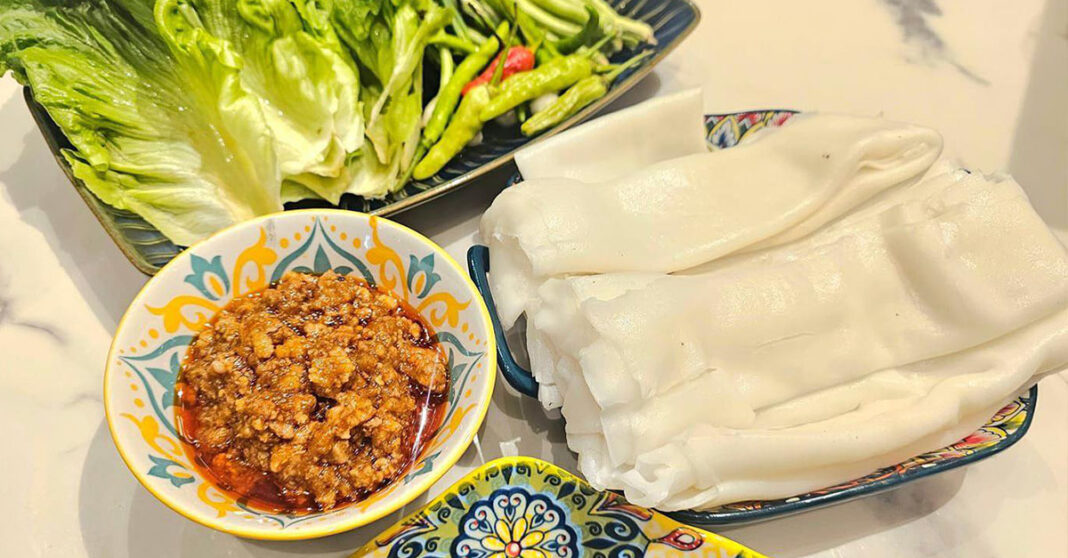Khao Soi Luang Namtha has become a social media sensation, surging to the forefront of Lao cuisine thanks to a viral TikTok video. This traditional noodle dish, a classic in the northern Luang Namtha and Luang Prabang provinces, has found a new wave of fans across Laos and beyond, all thanks to Khonemany Keosaenmai, the 30-year-old star of the viral video.
Her clip, which showed a unique way to enjoy Khao Soi, has reignited interest in the traditional noodle, making it a trending favorite among both locals and visitors.
Khao Soi, which translates to “cut rice,” is made from rice flour. The process involves steaming the flour in a rectangular mold, then rolling and cutting it into long noodle-like pieces.
Traditionally served with pork or beef broth, Khao Soi is complemented by a sauce made from minced pork, tomatoes, and fermented bean paste, with additional seasoning sauces to enhance its flavor. It’s typically enjoyed as a soup, but Khonemany’s video introduced a new approach: wrapping the noodles around the sauce and chili, creating a handheld roll.
Khonemany explained that her innovative method was born out of practicality.
“I prefer Khao Soi without soup, so I tried to wrap it and it turned out good. I’m surprised that I could make our traditional local food more popular among everybody,” she said.
The woman ‘s passion for Khao Soi is deeply rooted in her upbringing. She proudly described the dish as a symbol of Muang Sing district, her native region, her native region, where it has been a staple in every household and local restaurant since her childhood.
Her adaptation was influenced by a type of dry Khao Soi that is less common but still cherished in local cuisine. By modifying the traditional serving method, Khonemany aimed to make the dish more convenient and accessible.
“I would like the next generation to develop Khao Soi as a product for export so that we can promote Lao food internationally,” she said.
Khao Soi is more than just a dish in Laos—it’s a tradition passed down through generations. This popular noodle dish has deep roots in Lao culture, enjoyed by families for years. It continues to be a favorite meal, found in homes and markets across the country.



